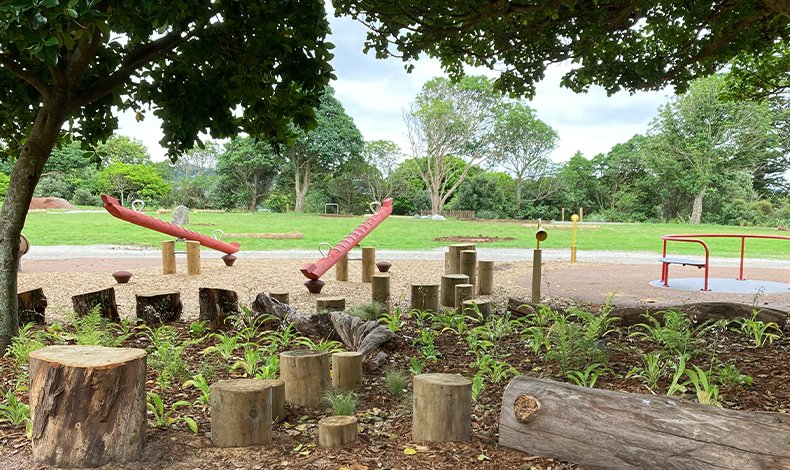A 21st century place space for Aotearoa
Whānau Ātea, a destination recreation space for Māngere and the wider region of Tāmaki Makaurau and Aotearoa, is providing a 21st Century vision of a Papa Tākaro (playground).
The Boffa Miskell project, one of the first of its kind and scale undertaken by the Tūpuna Maunga Authority (TMA), provides a unique play-space that fuses traditional and contemporary play, nature play, active recreation, and preserves cultural practices and traditions that were once prevalent on Te Pane-a-Mataoho | Te Ara Pueru | Māngere Maunga.
Whānau Ātea is a destination recreation space for Māngere and the wider region of Tāmaki Makaurau.
Boffa Miskell, who previously worked with TMA to prepare Integrated Management Plans and Strategies, was responsible for coordinating with TMA to develop the vision for the play-space, engaging with mana whenua and the community to understand their aspirations, and testing design, planning, and consenting. The project also involved the investigation of sustainable materials, ongoing design development with community members, experts, guardians, and artists, and implementing the works on site.
The play-space, Whānau Ātea, is the first in Aotearoa to provide traditional hāngī pits, the first permanent and public kīorahi field in Tāmaki Makaurau, and integrates a Kapehu Whetū (Māori Star Compass). The project has worked with many knowledge holders and sharers to reinterpret rich pūrākau and sense of place through different design mediums.
The Boffa Miskell project is one of the first of its kind and scale undertaken by the Tūpuna Maunga Authority (TMA)
The play-space encapsulates the concept of Te Whare Tapa Whā, which is reflected through the sequences of multifaceted spaces. Four primary spaces have been built around Te Ara Hīkoi, providing play and learning opportunities for social, physical, mental, and spiritual wellbeing.
These include: Tākaro-a-Tāne, Tākaro-a-Mataoho, Tākaro-Pā-Tūwatawata, and Whānau Ātea, the central heart, which is a multi-use space for kīorahi, kapehu whetū, tōka-rona, public amenities, and connections to land, sea, and skies.
Aerial view of the courts.
Whānau Ātea is an exciting, explorative and collaborative approach to the way we think and design with landscapes in Aotearoa, reinterpreting our indigenous spaces. It encourages whānau and hapori whānui (community) in all facets to gather, connect, explore, learn and play together in harmony with our natural surroundings.
Boffa Miskell’s role in the project included Engagement & Consultation, Landscape Design (concept, developed, detailed), Project Management, Cultural Advisory, Planning and Drone Surveying. The Boffa Miskell team included Janine Bell, Aynsley Cisaria, William Hatton, Nick Pollard, Sarah Collins, John Potter and Rangitahi Kawe.
The project provides a unique play-space that fuses traditional and contemporary play, nature play and active recreation.



